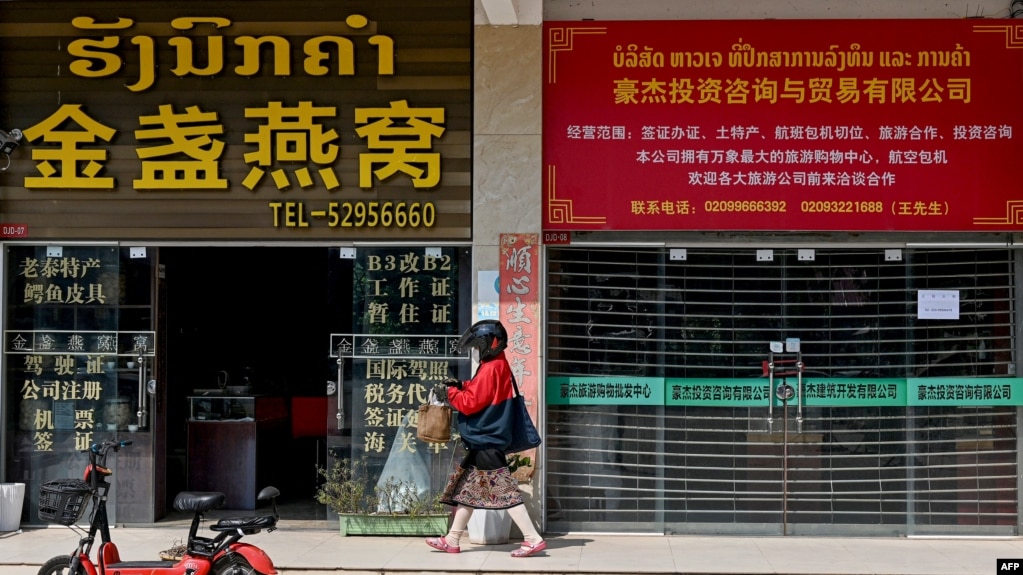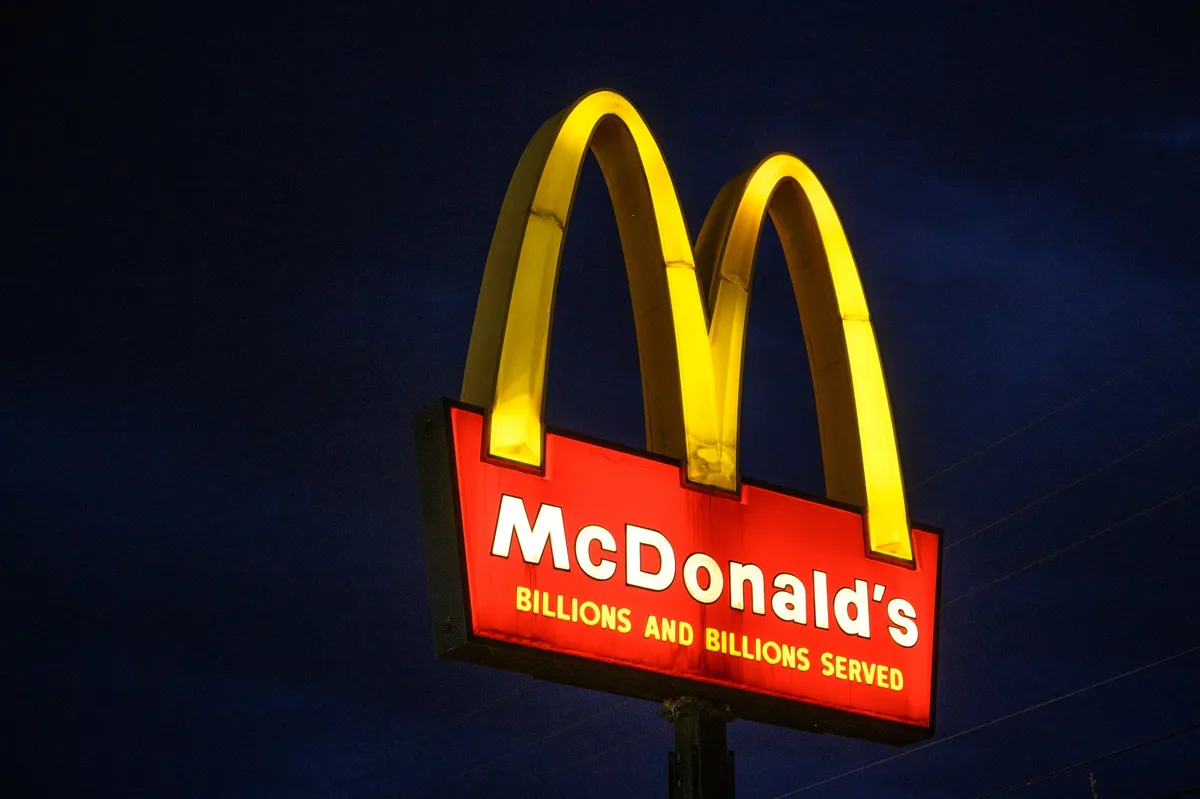from Bloomberg Television
Hefty Debt to China Stokes Soaring Inflation in Laos
by Zsombor Peter
Voice of America
 BANGKOK —
BANGKOK —
Laos is straining under soaring inflation rates made worse by the stress of massive loans owed mostly to China for a series of megaprojects that have yet to pay off.
The tiny landlocked nation of nearly 8 million has already deferred some payments. But economists and analysts say Beijing may start asking for a stake in Laotian land, resources and infrastructure as compensation, which could expand China’s influence in the neighboring country.
Rising prices
Laos’ inflation rate jumped from the low single digits to 23% in 2022 and another 31% last year, the highest in all of Asia, according to the Asian Development Bank, or ADB. The regional development bank expects inflation to stay above 20% through 2025.
Interpreting the Technology-Neutral Tax Credits in the Inflation Reduction Act
Two tax credits that take effect in January 2025 incentivize the generation of electricity from any technology with zero emissions. Simplifications to the federal interpretation of these tax credits could facilitate a smoother rollout.
by Aaron Bergman
Resources.org
 The technology-neutral tax credits for electricity generation and energy storage (sections 45Y and 48E of the US tax code) have the potential to be the most impactful elements of the Inflation Reduction Act for reducing greenhouse gas emissions. These tax credits replace a menagerie of tax credits for specific technologies (e.g., wind turbines and solar panels) with one seemingly simple qualification: whether the technology has zero emissions. Moreover, instead of having ever-changing expiration dates, these tax credits will remain available to investors until the emissions from the power sector are reduced by a set amount. Assuming the credits are durable against changes in the makeup of Congress, this condition provides invaluable certainty for investors and project developers and avoids the boom-and-bust cycle that sometimes was seen with the prior regime of tax credits.
The technology-neutral tax credits for electricity generation and energy storage (sections 45Y and 48E of the US tax code) have the potential to be the most impactful elements of the Inflation Reduction Act for reducing greenhouse gas emissions. These tax credits replace a menagerie of tax credits for specific technologies (e.g., wind turbines and solar panels) with one seemingly simple qualification: whether the technology has zero emissions. Moreover, instead of having ever-changing expiration dates, these tax credits will remain available to investors until the emissions from the power sector are reduced by a set amount. Assuming the credits are durable against changes in the makeup of Congress, this condition provides invaluable certainty for investors and project developers and avoids the boom-and-bust cycle that sometimes was seen with the prior regime of tax credits.
However, things are never as simple as one might like. In a series of earlier issue briefs, I discussed some of the challenges facing the US Department of the Treasury in the implementation of these tax credits.
Top Federal Reserve Official Warns Progress On Taming U.S. Inflation ‘May Be Stalling’
Governor Christopher Waller says he still supports a December interest rate cut barring a surprise in the economic data
by ColSmith
FT

Christopher Waller, a Fed governor who sits on the policy-setting Federal Open Market Committee, on Monday said he backed the central bank lowering rates at its December 17-18 meeting. He said still-elevated borrowing costs were curbing demand across the world’s biggest economy, contributing to easing price pressures.
Still, Waller noted that “if the data we receive between today and the next meeting surprise in a way that suggests our forecasts of slowing inflation and a moderating but still-solid economy are wrong, then I will be supportive of holding the policy rate [unchanged in December]”.
Fed’s Williams Expects Gradual Decline in Inflation, Interest Rates
by Nicholas Jasinski
Barron’s
 inflation goals argues for a continued, gradual decline in interest rates, said Federal Reserve Bank of New York President John Williams on Monday.
inflation goals argues for a continued, gradual decline in interest rates, said Federal Reserve Bank of New York President John Williams on Monday.
The U.S. economy is strong today and inflation is above the Fed’s 2% annual target, with monetary policy that remains restrictive, Williams said in remarks before the Queens Chamber of Commerce in New York on Monday. So why should the Fed cut at all?
“The simple answer is that while growth in demand has been strong, growth in supply has been even stronger,” Williams said in prepared remarks. “Specifically, robust growth in both the labor force and in productivity has meant that the economy can expand at a higher pace than we saw before the pandemic, without creating inflationary pressures.”
Fed Governor Waller Says He is ‘Leaning Toward’ a December Rate Cut, but Worries About Inflation
Federal Reserve Governor Christopher Waller said Monday he is anticipating an interest rate cut in December but is concerned about recent trends on inflation.
by Jeff Cox
CNBC.com
 Federal Reserve Governor Christopher Waller said Monday he is anticipating an interest rate cut in December but is concerned about recent trends on inflation that could change his mind.
Federal Reserve Governor Christopher Waller said Monday he is anticipating an interest rate cut in December but is concerned about recent trends on inflation that could change his mind.
“Based on the economic data in hand today and forecasts that show that inflation will continue on its downward path to 2 percent over the medium term, at present I lean toward supporting a cut to the policy rate at our December meeting,” Waller said in remarks before a monetary policy forum in Washington.
However, he noted the “decision will depend on whether data that we will receive before then surprises to the upside and alters my forecast for the path of inflation.”
Waller cited recent data indicating that progress on inflation may be “stalling.”
McDonald’s Inflation Tug of War Should Worry More Companies
Consumers won’t be the only ones feeling the pain if price pressures are reignited under Trump.
by Nir Kaissar
Bloomberg.com
 If you want a glimpse of the looming tug of war between US corporations and consumers over prices, look at the drama unfolding at McDonald’s Corp. The fast-food icon raised prices in response to the spike in post-pandemic inflation only to discover that a broad swath of Americans can no longer afford Big Macs. Now it’s rolling back some of those price hikes.
If you want a glimpse of the looming tug of war between US corporations and consumers over prices, look at the drama unfolding at McDonald’s Corp. The fast-food icon raised prices in response to the spike in post-pandemic inflation only to discover that a broad swath of Americans can no longer afford Big Macs. Now it’s rolling back some of those price hikes.
McDonald’s story may become a familiar one if tariffs and deficits stoke inflation as many expect. Last week, Donald Trump threatened additional tariffs on China and new ones on Mexico and Canada. He also wants to extend his 2017 tax cuts due to expire next year and add new reductions, which would likely result in trillions of dollars of fresh deficits. If those plans materialize and push inflation higher, someone will have to pick up the tab. Companies shouldn’t assume it will be consumers, as McDonald’s has discovered.
Beyond Energy: Inflationary Effects of Metals Price Shocks
by Jorge Miranda-Pinto, Andrea Pescatori, Martin Stuermer, Xueliang Wang
CEPR
 The shift from fossil fuels to renewable technologies may render the global economy less oil-intensive and more metals-intensive. This column examines how metals supply shocks propagate through production networks and impact inflation. It finds that copper supply shocks have significant and persistent effects on both headline and core inflation. In comparison, oil supply shocks mostly impact headline inflation immediately. As the global economy becomes more metals-intensive, central banks need to be aware that the effect of metals price shocks on inflation could be less visible initially but more persistent.
The shift from fossil fuels to renewable technologies may render the global economy less oil-intensive and more metals-intensive. This column examines how metals supply shocks propagate through production networks and impact inflation. It finds that copper supply shocks have significant and persistent effects on both headline and core inflation. In comparison, oil supply shocks mostly impact headline inflation immediately. As the global economy becomes more metals-intensive, central banks need to be aware that the effect of metals price shocks on inflation could be less visible initially but more persistent.
Rise in October Consumer Inflation Not Enough to Stop Fed Rate Cuts
by Jason Schenker
Forbes
![]() Consumer inflation accelerated in October 2024. However, the odds of a Federal Reserve interest rate cut on December 18 are still high. October year-on-year total Consumer Price Index inflation accelerated to 2.6% from 2.4%, while total Personal Consumption Expenditures inflation accelerated to 2.3% from 2.1%, and core PCE inflation accelerated to 2.8% from 2.7%. Core CPI was unchanged in October, but it was sticky and more elevated at 3.3%. Despite elevated consumer inflation rates, the chance of a 0.25% Fed rate cut on December 18 was 66% on November 30.
Consumer inflation accelerated in October 2024. However, the odds of a Federal Reserve interest rate cut on December 18 are still high. October year-on-year total Consumer Price Index inflation accelerated to 2.6% from 2.4%, while total Personal Consumption Expenditures inflation accelerated to 2.3% from 2.1%, and core PCE inflation accelerated to 2.8% from 2.7%. Core CPI was unchanged in October, but it was sticky and more elevated at 3.3%. Despite elevated consumer inflation rates, the chance of a 0.25% Fed rate cut on December 18 was 66% on November 30.
October CPI Consumer Inflation Rates Are Elevated
The U.S. Bureau of Labor Statistics release of the October CPI showed an acceleration in year-on-year total CPI to 2.6% from 2.4%. Although CPI consumer inflation rates have fallen, they are still not at the Fed’s 2% target, and year-on-year total CPI is unlikely to get back down to 2% until sometime in the first half of 2025. Meanwhile, year-on-year core CPI was unchanged and elevated at 3.3% in October.
Capehart: ‘Troubling’ Voters Ignored Mass Deportations, Charges Where They Didn’t Have All the Evidence Due to Inflation
by Ian Hanchett
Breitbart.com
 On Friday’s “PBS NewsHour,” Washington Post Associate Editor and MSNBC host Jonathan Capehart stated that “among many things that I found troubling about the 2024 election” was the fact that voters decided “Gas is too high, grocery store prices are too high. And so, yeah, we’re just going to go with” President-Elect Donald Trump, “leave aside all sorts of other things he said, such as mass deportations.” And charges against him where they hadn’t seen all the evidence.
On Friday’s “PBS NewsHour,” Washington Post Associate Editor and MSNBC host Jonathan Capehart stated that “among many things that I found troubling about the 2024 election” was the fact that voters decided “Gas is too high, grocery store prices are too high. And so, yeah, we’re just going to go with” President-Elect Donald Trump, “leave aside all sorts of other things he said, such as mass deportations.” And charges against him where they hadn’t seen all the evidence.
Co-host William Brangham said, “[T]he voters looked at all of that, again, as much as you could, the charges, they don’t see all of the evidence, but they looked at it, and they sized up Donald Trump and said, we pick him.”
Capehart responded, “Right. And that’s what’s among many things that I found troubling about the 2024 election.
Euro Shrugs After Eurozone Inflation Rises
from Market Pulse
 The euro is showing little movement on Friday. In the European session, EUR/USD is trading at 1.0564, up 0.09%. There are no US events today and US markets will close early for the Thanksgiving holiday weekend.
The euro is showing little movement on Friday. In the European session, EUR/USD is trading at 1.0564, up 0.09%. There are no US events today and US markets will close early for the Thanksgiving holiday weekend.
Eurozone inflation jumps to 2.3%
Today’s eurozone inflation report was a reminder that inflation may be largely contained but the battle is not yet over. In November, CPI climbed to 2.3% y/y, up from 2% in October and matching the market estimate. Core inflation, which excludes volatile food and energy prices and is a better gauge of inflation trends, was unchanged at 2.7% y/y, shy of the 2.8% market estimate. Services inflation, which has been persistently high, rose 3.9%.
